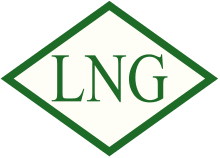
Scrubber fitting times up 33pc in 3Q: Clarksons

Shipyards have become increasingly congested with demand for scrubber installations in vessels before January 2020, when the International Maritime Organisation's sulphur cap on marine fuel emissions comes into effect.
The majority of these installations are retrofits, in which an active vessel is sent to a shipyard for a new installation. Of those retrofits 80pc are done in Chinese shipyards.
Clarksons says 15pc of crude tankers, measured by tonnage capacity, are projected to be fitted with scrubbers by the end of 2019. This includes 25pc of the global fleet of Very Large Crude Carriers (VLCCs), which carry 2mn barrel cargoes, and 18pc of Suezmax vessels, which carry 1mn barrel cargoes. By the end of 2020, this figure will increase to 21pc of all crude tankers, 34pc of VLCCs and 26pc of Suezmaxes.
Scrubber uptake levels have been marginally lower for dry bulk carriers. Of the global fleet of dry bulk carriers 13pc will be fitted with scrubbers by the end of 2019, including 26pc of Capesize vessels, which carry around 180,000t cargoes. By the end of 2020 Clarksons estimates 18pc of the global dry bulk carrier fleet will be fitted with scrubbers, including 36pc of Capesizes.
Retrofitting scrubbers reduced the supply of active vessels in the freight market, with Clarksons' research showing that more than 2pc of crude tankers were taken out of service in September this year for scrubber installations.
Ships with scrubbers will be able to use 3.5pc sulphur fuels and still comply with IMO 2020 regulations, which are expected to be much cheaper than low-sulphur fuel alternatives such as LNG, marine gas oil and 0.5pc fuel next year.
The number of scrubber-fitted vessels has increased ten-fold in the past two years, from an estimated 400 vessels at the start of 2018 to 4,000 at the start of 2020. Clarksons projects that this will increase to 19pc of the global fleet by the end of 2020.


Trump weighs using $2 billion in CHIPS Act funding for critical minerals

Codelco cuts 2025 copper forecast after El Teniente mine collapse

Electra converts debt, launches $30M raise to jumpstart stalled cobalt refinery

Barrick’s Reko Diq in line for $410M ADB backing

Abcourt readies Sleeping Giant mill to pour first gold since 2014

Nevada army depot to serve as base for first US strategic minerals stockpile

SQM boosts lithium supply plans as prices flick higher

Viridis unveils 200Mt initial reserve for Brazil rare earth project

Tailings could meet much of US critical mineral demand – study

Kyrgyzstan kicks off underground gold mining at Kumtor

Kyrgyzstan kicks off underground gold mining at Kumtor

KoBold Metals granted lithium exploration rights in Congo

Freeport Indonesia to wrap up Gresik plant repairs by early September

Energy Fuels soars on Vulcan Elements partnership

Northern Dynasty sticks to proposal in battle to lift Pebble mine veto

Giustra-backed mining firm teams up with informal miners in Colombia

Critical Metals signs agreement to supply rare earth to US government-funded facility

China extends rare earth controls to imported material

Galan Lithium proceeds with $13M financing for Argentina project

Kyrgyzstan kicks off underground gold mining at Kumtor

Freeport Indonesia to wrap up Gresik plant repairs by early September

Energy Fuels soars on Vulcan Elements partnership

Northern Dynasty sticks to proposal in battle to lift Pebble mine veto

Giustra-backed mining firm teams up with informal miners in Colombia

Critical Metals signs agreement to supply rare earth to US government-funded facility

China extends rare earth controls to imported material

Galan Lithium proceeds with $13M financing for Argentina project

Silver price touches $39 as market weighs rate cut outlook

















